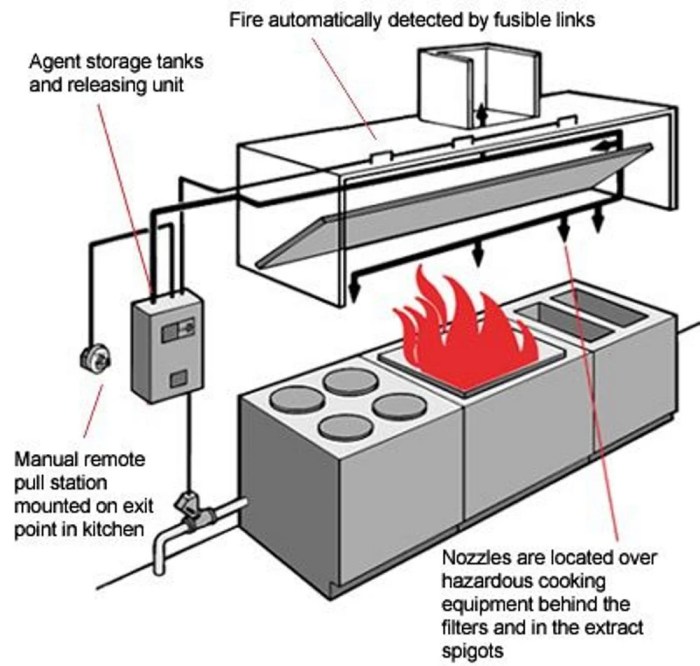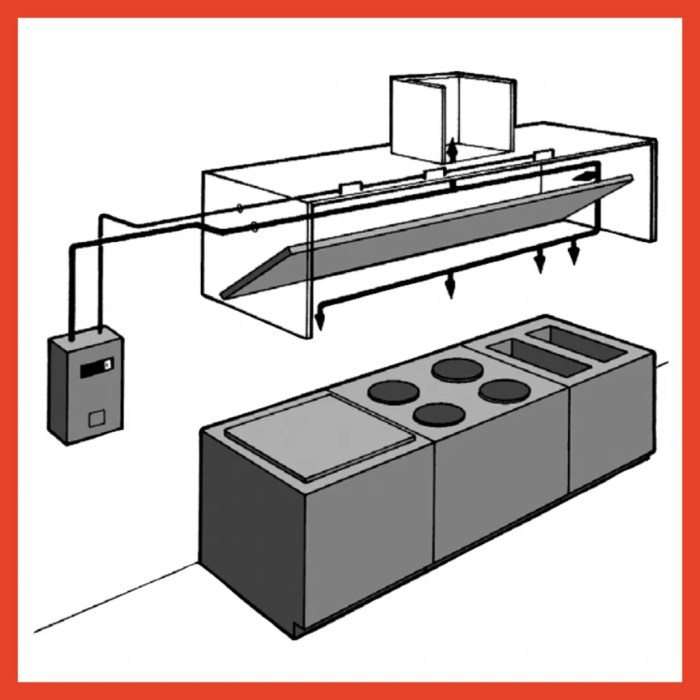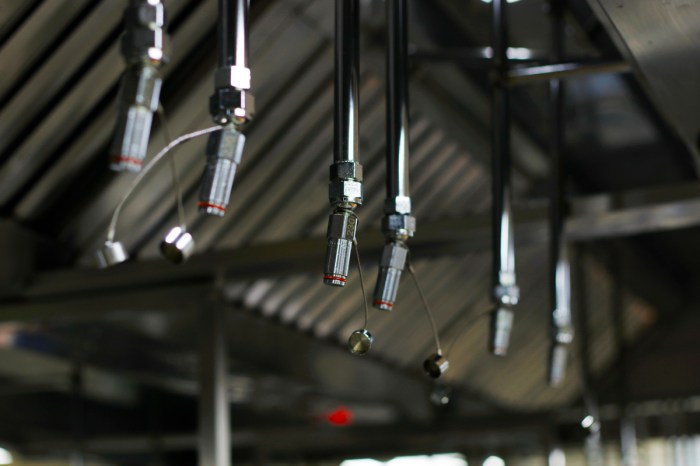If the ansul system does not put out a fire – If the Ansul system fails to put out a fire, the consequences can be devastating. This system is designed to extinguish fires quickly and efficiently, but it is not foolproof. In this article, we will explore the different types of fire extinguishing mechanisms used in Ansul systems, the potential causes of system failure, and the consequences of such failures.
We will also provide recommendations for preventing Ansul system failures and mitigating the consequences of system failure.
Fire Extinguishing Mechanisms

Ansul systems employ various fire extinguishing mechanisms to suppress and extinguish fires. These mechanisms are tailored to specific types of fires and environments, ensuring effective fire suppression in diverse scenarios.
Water-Based Systems
- Sprinkler systems: Release water droplets to cool and extinguish fires by absorbing heat and displacing oxygen.
- Water mist systems: Generate a fine mist of water droplets, which rapidly absorb heat and create a cooling effect.
Chemical Agents
- Dry chemical systems: Use dry chemical powder to smother fires and inhibit the chemical reaction.
- Wet chemical systems: Employ a potassium-based solution to create a soapy foam that blankets and extinguishes fires.
Inert Gases
- Carbon dioxide systems: Release carbon dioxide gas, which displaces oxygen and creates an inert atmosphere to extinguish fires.
- Nitrogen systems: Use nitrogen gas to reduce oxygen concentration and suppress combustion.
Foam Agents
- Alcohol-resistant foam systems: Produce a foam blanket that resists the effects of alcohol-based fuels.
- Hydrocarbon foam systems: Generate a foam that is effective against hydrocarbon-based fuels.
Causes of System Failure

Ansul systems can fail to extinguish fires due to various factors. Identifying these causes is crucial for preventing system failure and ensuring effective fire protection.
Mechanical Failures
- Damaged or malfunctioning valves: Prevent the release of extinguishing agents.
- Faulty sensors: Fail to detect fires or trigger the system prematurely.
Electrical Failures
- Power outages: Disable the system’s electrical components, including sensors and actuators.
- Short circuits: Can damage system components or trigger false alarms.
Human Error
- Inadequate system design or installation: Can lead to improper coverage or ineffective operation.
- Improper maintenance or testing: Can result in undetected faults or reduced system reliability.
Environmental Factors
- Extreme temperatures: Can affect the performance of system components, such as sensors and actuators.
- Corrosion or rust: Can damage system components and reduce their effectiveness.
Consequences of System Failure

Failure of an Ansul system to extinguish a fire can have severe consequences, leading to property damage, injuries, and even fatalities.
Property Damage
- Extensive fire damage to buildings, equipment, and inventory.
- Structural damage that can compromise building integrity.
Injuries and Fatalities, If the ansul system does not put out a fire
- Inhalation of toxic fumes and smoke.
- Burns and injuries from escaping the fire.
- In extreme cases, fatalities due to smoke inhalation or fire-related injuries.
Business Disruption
- Loss of production and revenue due to damaged equipment and facilities.
- Disruption of operations and loss of customer confidence.
Prevention and Mitigation Measures

To prevent Ansul system failures and mitigate their consequences, it is essential to implement proactive measures and maintain the system effectively.
Prevention
- Regular inspection and testing: Ensure system components are functioning correctly and detecting fires reliably.
- Proper system design and installation: Follow manufacturer’s guidelines and industry standards to ensure optimal performance.
- Adequate training: Educate personnel on system operation, maintenance, and emergency procedures.
Mitigation
- Backup systems: Install redundant systems or consider multiple extinguishing mechanisms to enhance fire protection.
- Firewalls and compartmentalization: Divide buildings into compartments to contain fires and prevent their spread.
- Emergency response plans: Establish clear procedures for evacuating personnel and responding to fire emergencies.
Helpful Answers: If The Ansul System Does Not Put Out A Fire
What are the different types of fire extinguishing mechanisms used in Ansul systems?
Ansul systems use a variety of fire extinguishing mechanisms, including water, foam, dry chemical, and carbon dioxide.
What are the potential causes of Ansul system failure?
Ansul system failures can be caused by a variety of factors, including mechanical failure, electrical failure, and human error.
What are the consequences of Ansul system failure?
Ansul system failures can have a variety of consequences, including property damage, injuries, and death.